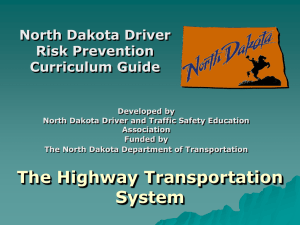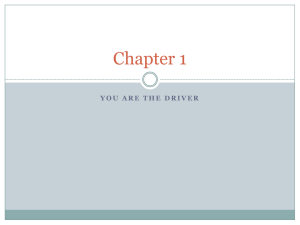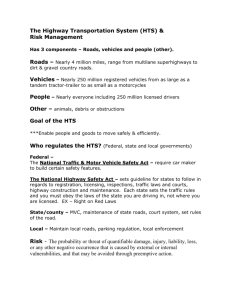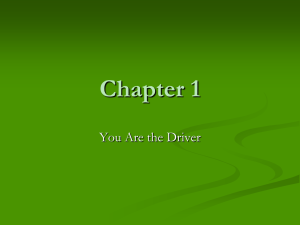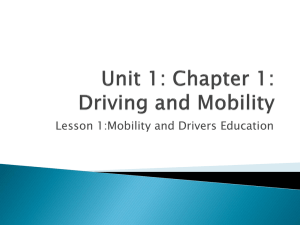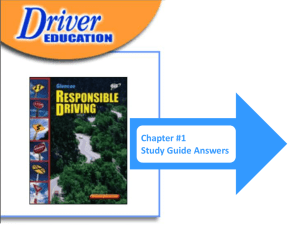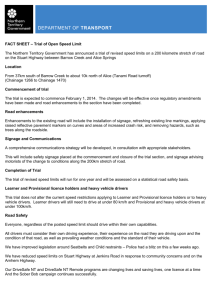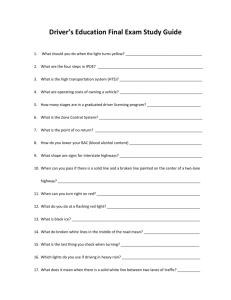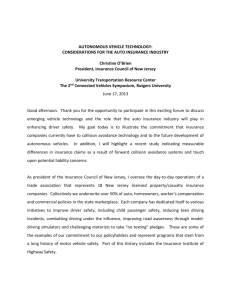Driver Education & Highway Transportation System Basics
advertisement
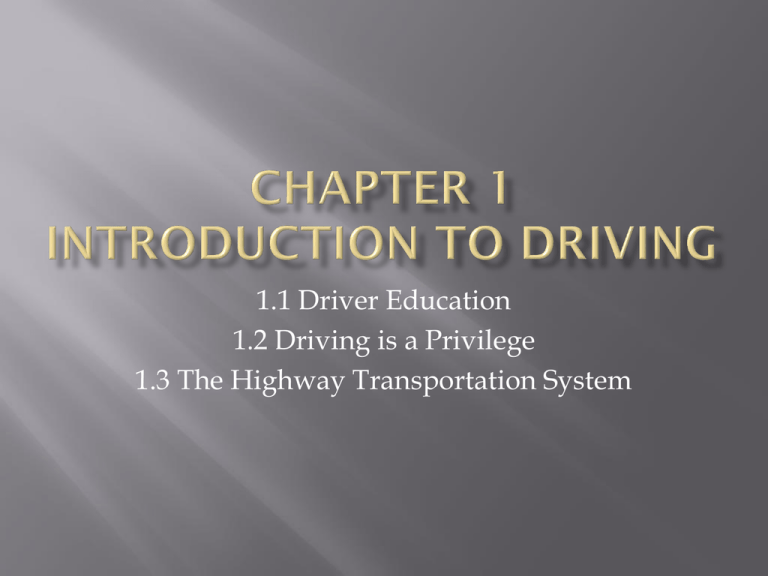
1.1 Driver Education 1.2 Driving is a Privilege 1.3 The Highway Transportation System Do you think you have the “right” to drive? Why/Why Not? Designed to help unlicensed drivers become familiar with basics Upon completion, education is not done! You will not learn everything here Components In-class instruction 30 hours of classroom driver’s education Behind-the-Wheel training 6 hours of BTW instruction 50 hours with parents This is where you learn to drive! Driving is a privilege, not a “right”. –Jesse White Legal Duties Obey the law Financial Obligations Pay for accidents Courtesy to Others Watch other vehicles and pedestrians Don’t disrupt the flow Protecting your Passengers All passengers wear safety belts Know your vehicle What your car can/cannot do? Regular maintenance Being ready to drive Emotional Physical Mental Highway Transportation System People The people who use the HTS by driving, walking, or riding are called ROADWAY USERS Vehicles Cars, Trucks, Semi-Trucks, Motorcycles, Farm Vehicles, Buses, Campers, Etc….. Roadways Classifications Conditions Function Free or Pay Toll Regulating the HTS Federal, State, Local Federal – National Highway Safety Act – set of traffic safety guidelines State and Local Governments - Enforce guidelines National Guidelines Vehicle Code Federal and State laws that regulate the HTS Enforcement Agencies Assure that laws are obeyed Motor Vehicle Depts Set rules that assure driver and vehicle standards are met Courts Decides whether drivers are violating laws Highway Traffic Engineers Plan, Build, and Maintain the complex system of roadways Drivers create most of the problems Failures in itself Poorly designed plans Construction Overall, the United States and Canada have one of the best and most efficient roadway systems in the world.
